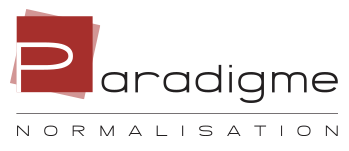Training
Audit engagement – Paradigme file

Length: 7 h 00
Updated training for 2023-2024
Summary
Audit files represent major engagements for CPA firms, particularly audits of the financial statements of not-for-profit organizations (NPO). These engagements are performed to meet the requirements of the NPO’s funders or, for private enterprises (PE), the requirements of creditors and investors. The objective of these engagements is to obtain a high level of reliability in the financial reporting.
Why have a Paradigme version of an audit file template?
- To achieve the objectives of obtaining appropriate and sufficient evidence
- By focusing the work at different stages of the engagement: from planning to execution
- To enable the practitioner to express a conclusion on the reliability of the financial reporting and issue a report on the financial statements with a reasonable level of assurance
- By providing examples to obtain sufficient and appropriate audit evidence
- By presenting work tools for determining and documenting the number of substantive procedures
- By determining the most efficient way to document and use Paradigme Questionnaires for compliance and/or substantive tests
- To document the audit file in accordance with the various sections of the CPA Canada Handbook, from CAS 200 to CAS 810
- By using the table of contents and various worksheets from the Paradigme Questionnaires
Agenda
Planning the audit engagement
- Acceptance of the audit engagement and the independence standards in the Code of Ethics
- Tolerance of risks of material misstatement (RMM)
- Understanding of the audited entity:
- Operations and accounting records, including internal control
- Walk-through tests
- Evaluation of internal controls and the control environment
- Determination of the audit approach (mixed or substantive)
- Determining materiality and the materiality of the work
- Identifying material items and assessing the RMM by assertion
- Planning effective audit procedures to address the RRM
Execution of the audit engagement
- Obtaining sufficient and appropriate audit evidence to support the assessment of RRM for each material item in the financial statements
- Documenting the analytical procedures
- Sample worksheets for determining the number of substantive tests for the main items and documenting the substantive tests:
- Receivables, including cut-offs
- Inventories, including count testing procedures
- Property, plant and equipment and intangible assets
- Accounts payable, including cut-offs, salaries and commodity taxes
- Long-term debt (financial liabilities), including documentation to support classifications as current or long-term
- Substantive tests on sales and cost of goods sold as well as grant revenue reconciliations
- Tests on salaries
- Other procedures on other income statement items
- Accounting estimates
Last but not least
- Presentation of the changes made to the Paradigme Audit Questionnaires
- You will receive a Paradigme file template to help you master the Paradigme Questionnaires
- Communications and letters
- Comments from the professional inspection
- Discussion with participants


Please contact André Mignault at 514-686-7341 to schedule your training.
Soyez les premiers informés!
Inscrivez-vous à notre infolettre et soyez à l’affût des formations disponibles et des nouveautés.
